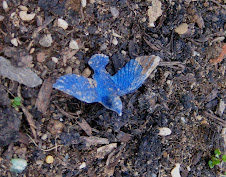Yesterday, some colleagues and I were talking in the break room--well, really it's the mail room/coffee room/copy lounge/complaining room--because there is no such thing as a "break" for teachers. (I know, I know. You've heard about the cushy hours and those long, lazy summers off, but let me tell you: if teachers didn't have those hours and some time away from school, there's no way most of us would keep doing it for the $4.83/hour our pay usually comes out to. This is why so many teachers work two jobs even though they have more college hours and graduate degrees than their peers in other professions.)
Off the soapbox and back to the story . . .
Yesterday, some colleagues and I were talking in the break room. Somehow, the conversation often turns to food, and this other teacher was describing a new recipe for scrambled eggs. Here's what she said to do: Put all your omelette ingredients into a sturdy plastic bag and put it into boiling water. It will cook in a few minutes, then you slide the eggs onto your plate.
Now, first, I have to say that I am all about innovation; plus, I used to be strangely fascinated by those boil-in-bag dinners that contained slices of "meat." But my eggs, now, they have to be cooked just right: with butter in an omelette pan or baked in a breakfast or brunch casserole. I like a little crunch and a little brown on top. If they slipped out of a bag, I don't think I could eat them.
If you like your eggs like I like mine, here's how we cook them. We call it an "Egg Bake," and we eat slices of it on English muffins or homemade biscuits. They have to be homemade biscuits, not the cheating kind that you smack on the counter. I won't be insulted if you call me a purist.
Egg Bake
9 eggs, scrambled, salt and pepper added
whatever cheese you have in the fridge (a cup or so)
whatever veg you have in the fridge or kitchen counter or garden
fresh or dried herbs if you like
If you're using fresh vegetables--zucchini, broccoli, tomatoes, peppers, mushrooms, onions, etc.--it is best to saute or steam them before putting them into the eggs.
Butter a glass--this is important--dish (size 6 X 10 inches or so), pour in the eggs, scatter your vegetables over the eggs, then sprinkle the cheese on top.
Bake at 400 degrees for about 12 to 15 minutes. You want the eggs to be set, not creamy like scrambled eggs. When the eggs are set, remove the dish from the oven and allow it to steam a little before slicing.
This is a great, quick recipe that I fall back on when I don't know what to cook for dinner, when someone has given me six dozen (yes, that happened once!) fresh eggs, or when I have fresh herbs and vegetables just waiting to be eaten. If you'd like your eggbake thicker, just add a few more eggs next time--or stack two slices between the bread.
Make sure those biscuits are homemade. Let me know what you think.
 This Is Just to Say: an apology composed in the garden
This Is Just to Say: an apology composed in the garden
 bread machine when we were just-married, but I graduated to "real" bread not long after that. After I tasted my friend Donna's bread, I was ashamed to admit that I was only dumping the ingredients into a machine and not touching it until it was time to slice it. Of course, even that bread was better than what
bread machine when we were just-married, but I graduated to "real" bread not long after that. After I tasted my friend Donna's bread, I was ashamed to admit that I was only dumping the ingredients into a machine and not touching it until it was time to slice it. Of course, even that bread was better than what 









